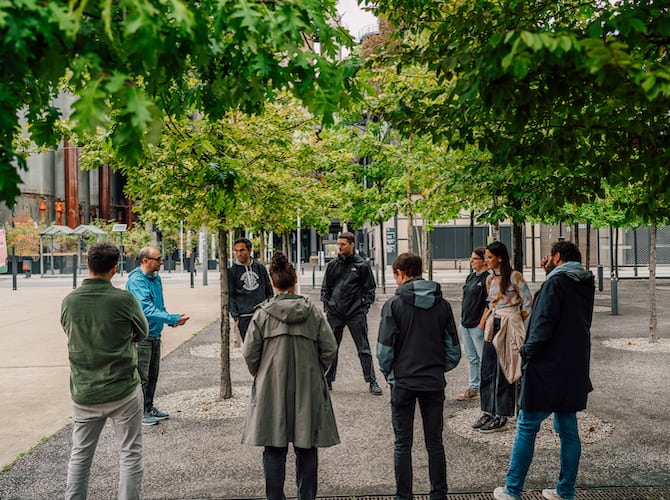The University of Luxembourg and LIST have worked with 11 musicians to organise a concert of music composed from data. Read to the end of the article for a free prize draw to win tickets.
The Sound Of Data is a special concert taking place on 3 December at the Rockhal as part of Esch 2022. What was the thinking behind this project?
Patrizia Luchetta: The Rockhal has hosted our researchers’ days since 2018 and our team thought why not make a link between Belval as a site for music lovers and Belval as a site of research. This project involves sonifying data.
Hang on, what?
The simplest way to think about it is when you take a data set and you want to convert it into a graph, you decide which parameters you want to transform into color, height, lengths of curves. With music it’s the same. You can decide that you want to convert speed into pitch, you convert it into frequency intervals, into tones, voice etc. So you actually choose how to convert it in an artistic way.
Is sonification just used for music?
Sonification is also used by scientists to analyse data, especially by blind scientists, who have no other access to a data set. For example, Wanda Diaz Merced, a Mexican astronomer became blind at the age of 20. She thought that she would have to give up on her dream to study astronomy, but then she came across sonification. She finished her education and went to work for NASA, where she is part of a team. Some years ago, they were studying a certain galaxy. And she found an event in that galaxy by hearing it, which her colleagues, who were looking at the data, did not see.
How easy is it for regular people to sonify data?
There is a free software called twotone.io where you can find data that has been already uploaded, some of it from our project. The software is very easy to use and you can directly use whatever data set and transform it into a piece of music. It is really fun. And it gives you an idea of what happens because you can play around a little bit.
What can audiences expect at the concert on 3 December?
This project had a couple of phases. One was for scientists from the University of Luxembourg and LIST to collect four different datasets. The first was history data, for which they used digitised newspaper, which they mined for terms connected to Luxembourg’s industrial past, which musicians can use to sonify.
One collection was crowdsourced art. Basically, the two mathematicians developed a software and installed it on iPad stations located in different places in the country. With your finger, you could draw a piece of abstract art. The timestamps of the people interacting with the screen have been collected and have been used by some of the musicians to create their compositions.
The third one was the traffic on the A4 leading to Belval, which tends to be quite busy. They both took the data from the cameras that are recording the traffic, but also they put a device called a piezo microphone on the floor, which recorded the noise of traffic. Those two parameters were combined and put at the disposal of the musicians.
The fourth data set is 3d body scans from the SnT. Because the music that is derived from this data will be commercial eventually, they decided it would be a bit tricky to use data that are derived from existing humans. So they took the data that they had already collected in the past and they basically constructed a synthetic person from it. That data is only being used by Valery Vermeulen, who will perform the piece that he has composed based on this synthetic being.
How did you select the musicians and did they have a background in this field?
Almost 40 musicians applied for our artists’ residence, a good third of which came from outside Luxembourg, and even from Turkey. It was really interesting to see that there was a community interested in this process.
We ended up choosing initially 13 musicians. Two unfortunately dropped out so we ended up with 11 musicians, three of which two from Belgium, one from Germany and the rest are Luxembourg-based musicians. So they have been busy since the end of May, initially for two weekends with Valerie Vermeulen, and then a whole set of online sessions with him. And we did two in-person workshops, one with Christian Vogel, who is a quite a well-known artist in that field and another with Jamie Pereira.
How challenging was the process for the musicians?
I think they found it all very challenging because it’s very mathematical. The main substance of the project was really to show musicians how they can use science or data or even just statistical data to compose. We interviewed all of the musicians about how they found the process and most of them said as a musician you are used to having complete freedom. And here if you integrate data, basically the data will dictate certain parameters. A couple of them said that they might continue to use it in the future.
Win a ticket to the Sound of Data
The organisers are giving away 10 tickets to The Sound of Data at Rockhal on 3 December featuring Max Cooper, among other artists. To win, email [email protected] and put SILICON LUXEMBOURG in the subject line.
